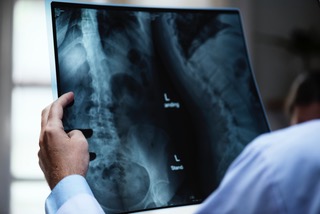Schroth Method Scoliosis Exercise Therapy
The Abbey Physiotherapy and Spine Centre provides Schroth Method scoliosis exercise therapy for individuals suffering with idiopathic scoliosis. We provided programmes for both adolescent and adult idiopathic scoliosis that are specific to individual needs.
The Schroth Method of scoliosis exercises is acknowledged by the Society on Scoliosis Orthopaedic and Rehabilitation Treatment (SOSORT) as being a conservative approach for the treatment of idiopathic scoliosis.
The 2016 SOSORT Guidelines “Orthpaedic and Rehabilitation Treatment of Idiopathic during Growth” made several recommendations with regards to performing scoliosis specific exercises to prevent scoliosis progression during growth, and during bracing and surgical therapy. Scoliosis specific exercises are also recommended to assist imp[rove breathing in relation to expanding and better ventilating restricted areas of the lungs.
The basic objectives of comprehensive treatment of idiopathic Scoliosis, as stated in the 2016 SOSORT Guidelines, are:
to stop curve progression at puberty (or if possible, even reduce it)
to prevent or treat respiratory dysfunction
to prevent or treat spinal pain syndromes
to improve aesthetics via postural correction
The objective of individuals suffering with idiopathic scoliosis will be influenced by their age and the likely risk of progression. However, irrespective of age, improving body aesthetics and psychological well being will be major objectives of both adolescents and adults. The prime concern of adolescents at risk of progression, is preventing the progression to avoid surgery; for adults the major concerns are slowing down or preventing progression, relief of pain syndromes, and improved breathing.
To achieve best possible outcomes, comprehensive conservative treatment of idiopathic Scoliosis requires a team approach composed of an Orthopaedic Surgeon, Orthotist, physiotherapist and if required a psychologist.
History of the Schroth Method
Founded by Katharins Schroth in Meissen, Germany 1921, the Schroth Method was later refined by her daughter Christa Lehnert-Schroth (author of Three Dimensional Treatment for scoliosis - A Physiotherpeutic Method for Deformities of the Spine, 1973) who together with her mother established the Katherina Schroth Clinin in Bad Sobernheim in 1982.
The Schroth Method has since developed into the most recognised conservative exercise based treatment approach for scoliosis in Germany, Ireland, Europe, the USA, South Korea and many other countries throughout the world.
Development of the Schroth Method continued under the direction of Dr. Hans Rudolph Weiss, Orthopaedic specialist, and grandson of the founder , Katherina Schroth (Dr. Weiss was medical director o0f the clinic between 1995 and 2008). Udo Roevenich and Axel Hennes, senior physical therapists at the clinic, further contributed to the development of the Schroth Method.
In 1995, Asklepios, a German health care provider bought the clinic and with it the rights to the Schroth Method which has come to be known as the intensive scoliosis rehabilitation program. Patients attending the clinic live in house during the 3 week intensive scoliosis exercise therapy rehabilitation program. As many as 180 patients attend the clinic at the same time.
The Schroth intensive scoliosis rehabilitation program conducted at the Bad Sobernheim clinic in Germany is comprehensively supported by a management team of doctors, orthopaedic specialists, physiotherapists, orthotists, psychologists and occupational therapists.
Objectives
The Schroth Method is an exercise based treatment that aims to improve posture, balance and movement. The overall objective of the Schroth Method is to slow down or stop the progression of scoliosis in order to avoid the necessity of surgery. Other important objectives include: pain relief, restoring normal postural; and improving lung capacity and rib mobilisation through corrective breathing.
Home Exercise Programme
After attending a Schroth therapist, patients are encouraged to perform a home exercise program on a continual lifelong basis in order to maintain their improved posture in activities of daily living.
Schroth Method Scoliosis Exercises
Schroth Method scoliosis exercises when performed consistently, improve posture, mobility and balance and facilitate more efficient movement patterns; exercises are specific to the type of scoliosis, and therefore to an individual with that type. The essence of the Schroth Method involves making pelvic(basic) corrections; lengthening the spine; performing Schroth Corrective Breathing; as explained below; and tensing the trunk muscles to maintain corrective posture.
The effectiveness of Schroth Best Practice Method scoliosis-specific therapy is largely dependent on the ability and commitment of patients, and in the case of juveniles and adolescents, their parents as caregivers, to carry out the prescribed exercise program. It is also of paramount importance that Schroth scoliosis specific exercise programs for individuals, are designed and customised by therapists trained in the Schroth Method.
Schroth Corrective Breathing
In all Schroth Best Practice Method scoliosis exercises, patients first assume a position/posture in which the curvatures in the lumbar spine, pelvis, thoracic spine and distorted rib cage, and shoulders are held in a corrected postural position. The spline is lengthened from the pelvis upwards. The positioning of the arms is important to corrections of the cervico-thoracic, and thoracic spine.
Whilst holding corrective posture, which mirrors (is opposite to)the scoliosis curves, patients begin Schroth corrective breathing. The technique directs breathing into the scoliosis affected areas - the collapsed areas on the ribcage. Breathing in this manner assists in decreasing rotation in both the rib cage and spine, and improve lung capacity and rib mobilisation. Stabilisation of the corrected posture then takes place in the form of isometric and isotonic muscle tensioning during the exhalation phase.
Thoracic Spine Correction
In all cases of thoracic spine correction, correction of the ribcage, shoulder girdle, and cervical spine (neck), is of critical importance. However, the above corrections are secondary to the formative Schroth pelvic corrections.
Schroth Method Effectiveness
The Schroth Best Practice Method is a conservative treatment approach which can improve health related quality of life ; by preventing curve progression, improving function; alleviating and eradicating pain; and avoiding spinal fusion surgery.
Education in the Schroth Method is the precursor to an affective home program of scoliosis-specific exercises. So, first seek help and guidance from a Schroth Best Practice Therapist.
As a conservative form of treatment for idiopathic scoliosis, Schroth method exercise therapy programs adhere to Society on Scoliosis Othopaedic and Rehabilitation Treatment(SOSORT) 2016 Guidelines:
-Auto postural correction three dimensionally (3D)
-Training in activities of daily living(ADL)
-Stabilizing corrected posture
-Patient education
A study focussing on evaluating the effectiveness of Schroth scoliosis-specific exercises performed by idiopathic scoliosis patients with high risk curves, whilst receiving brace treatment concluded: Schroth exercises during bracing can further improve the Cobb angle compared with bracing alone.
Idiopathic Scoliosis
There are many causes of scoliosis deformity but the most common type of scoliosis is idiopathic scoliosis (IS) which affects about 80% of all scoliosis patients. The term idiopathic literally means that the cause of the scoliosis deformity is unknown (Kleinberg 1922).
There are four chronological sub groups of idiopathic scoliosis as proposed by the Society on Scoliosis Orthpaedic and Rehabilitation Treatment( SOSORT). The sub groups are determined by the age when the first scoliosis features were diagnosed.
Infantile idiopathic scoliosis – 0 to 3 years
Juvenile idiopathic scoliosis - 3 to 10 years
Adolescent idiopathic scoliosis – 10 to 18 years
Adult idiopathic scoliosis – 18 years and over
Idiopathic scoliosis (IS) can progress before puberty and during periods of rapid growth in childhood and particularly in adolescence and again later in life.
Excluding scoliosis that develops early in life or from a separate syndrome there are two types of adult scoliosis. Adult idiopathic scoliosis which is a progression of the scoliosis form adolescence where curves have since worsened due to disc degeneration and [possible sagittal imbalance; and adult degenerative scoliosis, also known as de novo (new) scoliosis which starts in adult life due to disc degeneration, arthritis of facet joints and other factors.
Today, Scoliosis is known as a three dimensional deformity of the spine involving a forward , sideways, and rotational movement of the involved vertebrae .X-rays will show these vertebrae at the centre of the major curve to be wedge shaped in appearance. Bony changes in the vertebrae indicate the scoliosis is structural; these changes, together with soft tissue imbalances cause a trunk deformity.
Once the curve has begun a ‘vicious cycle’ of asymmetrical gravitational loading begins. As the vicious cycle takes hold it causes; more changes in the deformed vertebrae; further progression of the curve , which loses its flexibility; and further changes in trunk deformity.
At this point there is no cure for scoliosis but it can be managed in active daily life to maintain good (symmetrical) posture and optimal health. The Schroth Best Practice Method of scoliosis specific exercise are designed to help individuals better manage their scoliosis throughout their lifetime.



